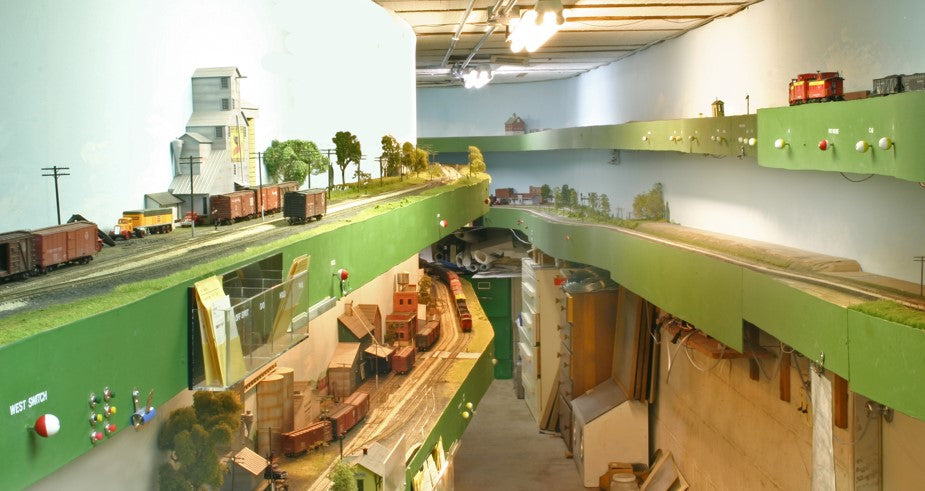5 tips for designing model train tracks for small, indoor spaces.
Model railroading is a rewarding hobby, but it can sometimes be challenging to find space for a full-sized layout. Fortunately, with careful planning and a few creative design choices, you can create a model train layout that fits into a smaller area. Here’s a guide to help you get started building a compact model train layout and maximizing every inch of your available space.
- Choose the Right Scale
When space is limited, choosing a smaller model train scale is often the best option. HO and N scales are popular choices among compact layouts. HO scale trains, which are about half the size of traditional O scale trains, allow for realistic details while conserving space. N scale trains, which are even smaller, are ideal for creating intricate layouts in tight spaces (check out our blog post on choosing the right scale to get a better idea of the benefits of each scale).
- Plan a Simple Layout
The simplicity of your design is crucial when you have limited space. Avoid complex designs that require large loops or extensive switching yards. Instead, consider a “point-to-point” design where trains travel between two points, even if those points include cleverly hidden tunnels or trainyards that create the illusion of a longer track.

Oval or figure-eight layouts also work well for compact spaces, allowing continuous running without taking up too much room.
Software like AnyRail or SCARM can help you digitally plan your layout and ensure all components fit, and our preconfigured track plans can get you started on building a functional layout even quicker.
- Utilize Your Vertical Space

A common mistake in compact model train layouts is forgetting about vertical space. Adding elevated tracks, bridges, and tunnels can create the illusion of depth and make your layout more engaging. You could even incorporate a second level by building a small riser for part of the track, which adds visual interest without using extra table space.
For detailed incline and layering tips, check out this guide on multideck design.
- Focus on Minimalist Scenery

While scenery can be a major part of a model train layout, adding too much detail in a small space can create clutter. Instead, go for a minimalist approach that captures the essence of a scene without overwhelming the layout. A few small buildings, trees, and roads can give the impression of a bustling town or countryside without taking up too much space or overpowering your track.
Check out the Model Railroader guide on how to build realistic scenery.
- Use Portable, Modular Designs
If you’re building in a multi-use room or an apartment, chances are you might need to move or store your track to make use of your space. Portability is essential for any track layout that’s not permanent.
If you need help getting started, Model Railroader’s small space solutions guide is an excellent resource with practical planning advice.
With a thoughtful approach, building a compact model train layout can be just as enjoyable and rewarding as a full-sized one.
Ready to get started? Visit shop.trains.com to find all the essential tools, trains, and accessories you need to make your compact model train layout!
- Written by Matt Herr
